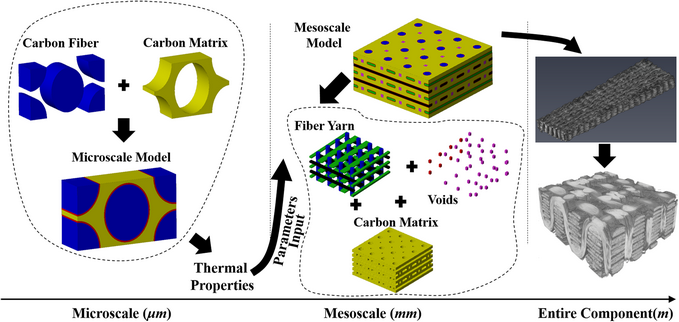Article contents
Numerical analysis of out-of-plane thermal conductivity of C/C composites by flexible oriented 3D weaving process considering voids and fiber volume fractions
Published online by Cambridge University Press: 22 July 2020
Abstract

Thermal conductivity behaviors are one of the most important evaluations of carbon fiber-reinforced carbon matrix (C/C) composites in the field of thermal protective structures. In order to deepen the understanding of the thermal conductivity behaviors of C/C composites, the out-of-plane thermal conductivity of C/C composites is studied by considering voids and the fiber volume fractions. The representative volume element (RVE) models of microscale and mesoscale are proposed. The parameters of the RVE models are captured by X-ray micro-computed tomography. The carbon matrix equivalent models and fiber volume fraction models along the z-direction were established. The effects of the porosity and fiber volume fraction along the z-direction on the thermal conductivity were analyzed. The proposed model was validated by experimental results at room temperature. Further, the numerical methods developed in this study can provide guidance for predicting the thermal conductivity of C/C composites with complex structures.
- Type
- Article
- Information
- Copyright
- Copyright © Materials Research Society 2020
References
- 11
- Cited by





